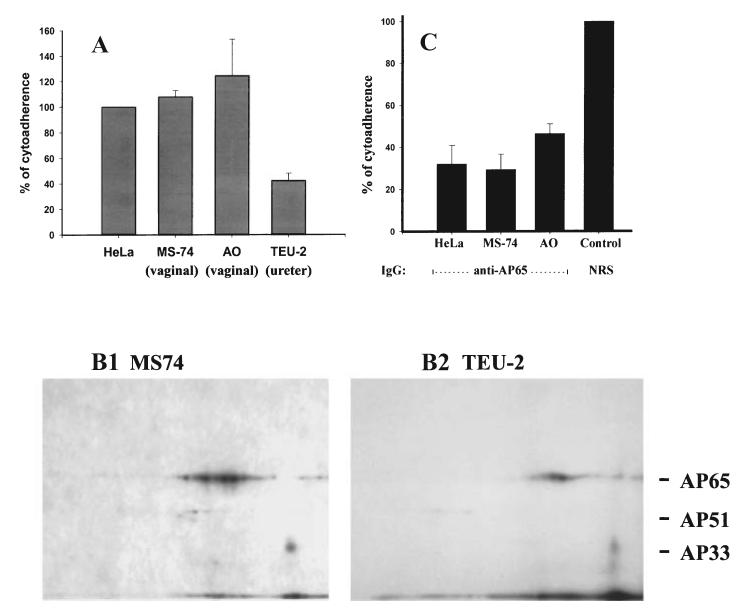Fig. 8.
Associations between levels of adherence of T. vaginalis T016 with amounts of adhesins bound to host cell surfaces. Part A, a cytoadherence assay was performed with quadruplicate samples comparing HeLa cells with immortalized VECs (MS74 and AO) and a immortalized ureter epithelial cell line (TEU-2). Overnight cultures of the confluent monolayers of cells were incubated with equal numbers of highly motile and radiolabelled mid-logarithmic phase trichomonads (see Experimental procedures). All samples were handled identically. The adherence experiment was performed on five different occasions and with similar results. The mean of the results for each cell type was compared with that for HeLa cells, which were normalized to be 100%. Approximately 40% of parasites in the suspension were adherent for HeLa cells. Part B. Autoradiogram two-dimensional patterns showing the amounts of iodinated adhesins from an extract of surface-labelled parasites bound to the cell surfaces by the ligand assay. MS74 (B1), HeLa cells and AO VECs had increased amounts of bound adhesins compared with the TEU-2 ureter cells (B2). In this experiment, the two-dimensional ligand assay was performed identically using duplicate samples of the radioiodinated trichomonad proteins and fixed host cells. X-ray film was exposed for an identical period of time to the acrylamide gels. Part C. Inhibition of adherence was demonstrated with purified anti-AP65 IgG eluted from preparative blots of AP65 (Arroyo et al., 1993). Washed radiolabelled organisms were first pretreated with antibody before addition to the cell monolayers. The level of adherence achieved for control prebleed normal rabbit serum (NRS) IgG was similar to that obtained in a normal adherence assay using HeLa cells, and this was normalized to 100%.

